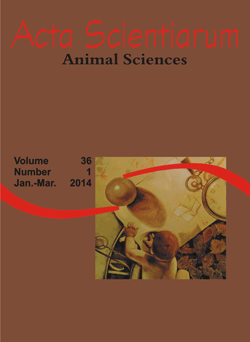<b>Floral Biology and pollination requirements of sesame (<i>Sesamum indicum</i> L.)</b>
Abstract
This study aimed to investigate the floral biology and pollination requirements of sesame (Sesamum indicum L.), cultivar CNPA G2. The study was carried out at Barbalha, State of Ceará, and consisted of two phases: floral biology and pollination requirements. Flowers were observed as for time of anthesis, lifespan and stigma receptivity, and were applied the following pollination treatments: open pollination, hand cross-pollination, hand self-pollination, pollination restricted with tulle bags and pollination restricted with paper bags. Significant differences (p < 0.05) were detected between treatments for the number of fruits harvested 30 days after pollination. It was shown that the sesame plant presents a mixed-pollination system, because it can produce fruit whatever the type of pollination tested. Flowers are able to autopollinate and do not depend on external agents. Pollinations restricted with paper and tulle bags produced fruit with greater number of heavier seeds. It is concluded that sesame crop is able to autopollinate and benefit from both self-pollination and cross-pollination.
Downloads
DECLARATION OF ORIGINALITY AND COPYRIGHTS
- I Declare that current article is original and has not been submitted for publication, in part or in whole, to any other national or international journal.
The copyrights belong exclusively to the authors. Published content is licensed under Creative Commons Attribution 4.0 (CC BY 4.0) guidelines, which allows sharing (copy and distribution of the material in any medium or format) and adaptation (remix, transform, and build upon the material) for any purpose, even commercially, under the terms of attribution.
Read this link for further information on how to use CC BY 4.0 properly.








































